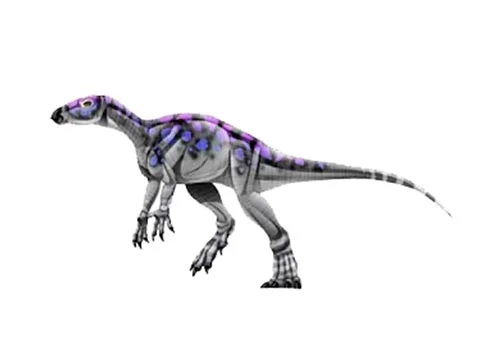Bugenasaura (large-cheeked lizard)

bug-en-oh-sour-a
William J. Morris – 1976
Herbivore
Estimated 5-6 meters long
Small Theropod
B. infernalis
USA – North America
Late Cretaceous, 70 million years ago
Bugenasaura Facts
Bugenasaura was a genus of ornithopod dinosaur that lived in the late Cretaceous period 70 million years ago in what is now North America. It was named for its distinctive cheek bones that were much larger than those of other similar dinosaurs.
The fossils of Bugenasaura have been found in the Campanian-Maastrichtian aged formations in Montana, USA. It was a small dinosaur, estimated to have measured about 6 meters in length, and weighed around 500 kg.
Bugenasaura is thought to have been a herbivore, as evidenced by its grinding teeth and jaw structure. It probably grazed on ferns, cycads and conifers, which were the dominant vegetation during the late Cretaceous.
Despite its small size, Bugenasaura had a few adaptations that made it well-suited to its environment. Its large cheek bones were likely used to store food, as many other dinosaurs with large cheek bones have been found with partially digested plant material inside them. The cheek bones also helped to support the jaw when chewing tough vegetation.
Overall, Bugenasaura is an interesting dinosaur that sheds light on the evolution of ornithopod dinosaurs and their adaptations to their environment. Its unique cheek bones make it a fascinating specimen for paleontologists to study and it provides insight into the dinosaur’s behavior and lifestyle.



